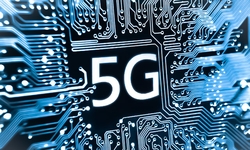7 Incredible Things You Can Do With 5G Network

The next generation of wireless technology is more than a boost to your smartphone. Think about VR, self-driving cars, and telemedicine reaching their potential. Here are 5 incredible things you can do with 5G.
Remote surgery
Apart from speed, 5G’s biggest benefit is its low latency or the short lag time between a device’s request to the network and receipt of a response. It may not be very evident, but there is a lag with 4G LTE. A 5G network can virtually eliminate it. This means that a surgeon may not need to be present in the operating room, in the future. Ericsson is working alongside a startup company called NeuroDigital Technologies and a few doctors at King’s College, London. They used a dummy patient to demonstrate how a surgeon could simply use a VR headset and special gloves to control a robot arm that would perform an actual operation in a remote location. The glove has haptic feedback motors that buzz when touched. The dummy’s organ will give you the sensation as if you were actually touching it. Major companies are calling it the “internet of skills’”. This enables you to transfer your expertise over a vast distance and that too in real-time with the help of robotics and haptic feedback. The whole setup would be impossible without real-time 5G.
Feel and touch over the internet
With the help of haptic feedback, you’ll be able to transmit a tactile sensation of experience, enhancing the sights and sounds of a video experience. Another Ericsson setup is trying to transmit notifications to you in the driver’s seat of a (virtual) car which is 50 kilometers away. With the help of this haptic feedback system built into the chair, you could feel yourself going over speed bumps and crashing into cones. In order to touch and feel things from miles away, you need to have low latency. This will have applications in the industrial area which also includes humans overseeing robotic assembly. For the first time, the network will be faster than your mind, Ericsson’s Chief Technology Officer Ulf Ewaldson said in an interview.
Self-driving motorcars
Many companies such as Google, Uber, etc are investing in self-driving cars now. Many in the industry don’t believe that a fully autonomous vehicle is even possible without a 5G network. Instant responses from the network and wide coverage mean the cars will be able to use 5G to talk to not only other cars but also sensors built around the city, such as street lamps, gas stations, etc.
Video-cam on drones
Similar to other innovations, 5G will also unlock the true capabilities of drones. Lynn Comp’s director of market development at Intel cited the example of a drone flying over an oil drill with live video coverage. The network will allow for more precise control of the drone while sending back high-definition video at a high-speed.
Virtual Reality
VR was a huge trend in the past 3 years. But the technology has taken a back seat last year with very little new hardware upgrade. Virtual reality is now in the hands of filmmakers, and it seems as if more has happened at the recent Sundance Film Festival than at MWC. VR at Mobile World Congress was mostly used to demonstrate how 5G could enhance the experience, and allow you to chat in real-time with live-streaming virtual worlds.
























